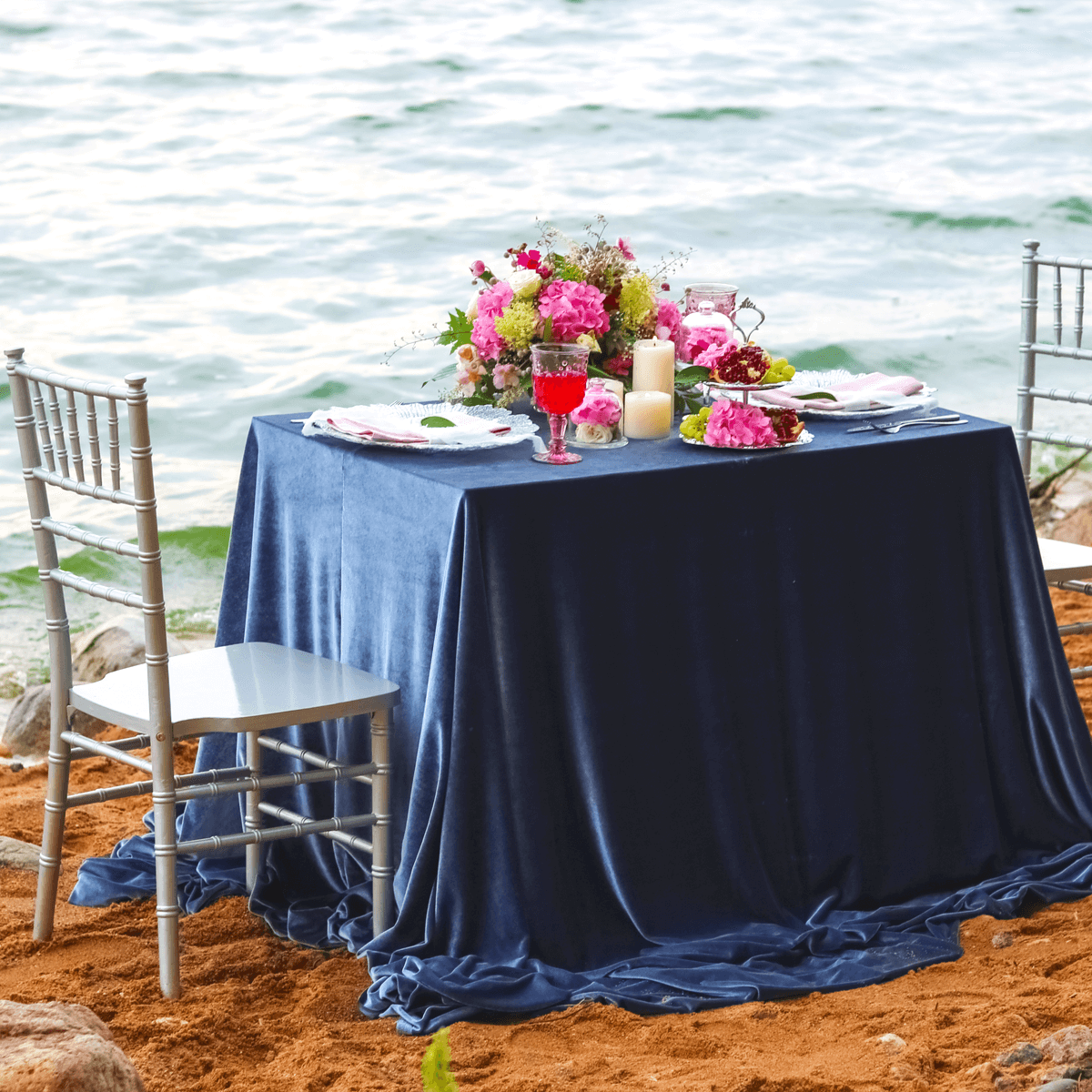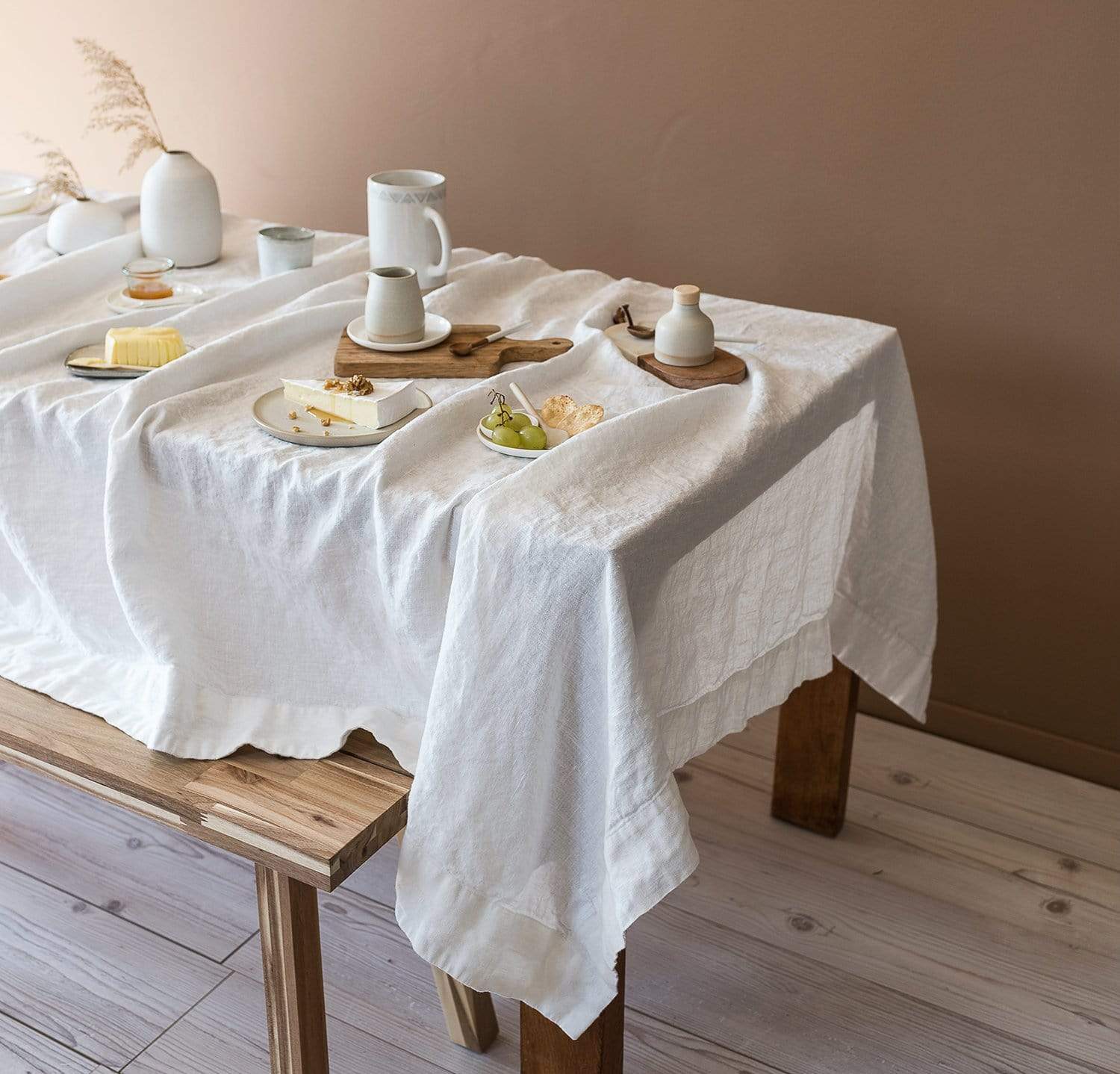Stylish Table Runner Ideas: Transform Your Eating Experience
Stylish Table Runner Ideas: Transform Your Eating Experience
Blog Article
Bed Linen Textile Advancements: Exploring Modern Trends and Creative Applications in Design and Fabric Sector
From lasting production techniques to cutting-edge weaving technologies, the development of bed linen is improving the landscape of the fabric market. As we dig right into the worlds of innovative style applications and the emergence of linen blends and hybrid fabrics, a brand-new chapter unfolds in which bed linen's duty in future textile technologies takes center stage.
Sustainable Practices in Linen Production
Lasting practices in linen manufacturing have become progressively important in the textile market's initiatives to lessen environmental impact and advertise moral sourcing approaches. Bed linen, a natural fiber derived from the flax plant, offers a series of advantages such as resilience, breathability, and biodegradability. Nonetheless, typical techniques of bed linen production can include significant water usage, chemical usage, and energy-intensive procedures.
To deal with these challenges, numerous textile producers are adopting sustainable practices throughout the linen production process. This consists of sourcing flax from organic farms that prevent harmful pesticides and chemicals, executing water-efficient retting strategies to extract fibers from the flax stalks, and utilizing green dyes and finishes. In addition, some companies are spending in renewable resource resources to power their production facilities and decreasing waste via recycling and upcycling initiatives.
Technological Innovations in Linen Weaving
With the growing emphasis on lasting techniques in linen manufacturing, the fabric market is now experiencing a rise in technical advancements especially targeted at revolutionizing the art of linen weaving. These advancements are reshaping the way linen textiles are produced, providing increased effectiveness, top quality, and imagination in weaving methods.
One of the key technical developments in linen weaving is the assimilation of computerized looms. These innovative looms are outfitted with software application that permits for intricate and elaborate styles to be woven with accuracy. By digitizing the weaving procedure, producers can achieve better consistency and accuracy in their linen fabrics.
Additionally, innovations in thread spinning innovation have enabled the manufacturing of finer and even more durable linen threads - table cloths. This results in softer and smoother linen materials that keep their quality even after several uses and laundries
Furthermore, the development of environmentally friendly dyeing processes and coatings for bed linen fabrics is getting grip. These sustainable techniques not only minimize the environmental impact however additionally deal with the raising customer need for fairly generated textiles.
Creative Layout Applications for Bed Linen
Ingenious creative strategies are progressively forming the imaginative style applications for bed linen in the fabric market. Linen's all-natural visual allure and ability to blend with other textiles make it a preferred selection for creating one-of-a-kind garments and devices that cater to the eco conscious consumer.
Moreover, developers are try out linen in home decoration, using its long lasting and breathable nature to craft stylish furnishings such as drapes, bed linens, and furniture. The texture and drape of bed linen bring a feeling of class and comfort to indoor areas, including a touch of sophistication to contemporary homes.

Linen Blends and Hybrid Fabrics

Hybrid materials, on the various other hand, take the concept of mixing an action better by integrating added elements such as metallic strings, recycled products, or conductive fibers. These ingenious fabrics not only increase the layout possibilities yet additionally present practical facets like conductivity, antimicrobial homes, or enhanced toughness. Crossbreed materials are progressively being made use of in numerous markets, consisting of style, indoor design, and technical textiles, where the demand for multifunctional products is on the surge.
Bed linen's Function in Future Textile Innovations

In the world of future fabric innovations, linen is expected to be an essential player in the development of sophisticated practical materials. Scientists and developers are checking out look here means to improve linen's inherent top qualities with technological improvements, such as integrating clever fabrics, nanotechnology, and performance finishes. These advancements intend to raise bed linen's efficiency features, making it appropriate for a more comprehensive Get More Info variety of applications, from activewear to protective clothes.
Furthermore, the mix of linen with other natural or synthetic fibers opens up endless possibilities for producing novel fabrics with one-of-a-kind residential or commercial properties and capabilities. By leveraging bed linen's features and discovering ingenious blends, the textile market is positioned to introduce exciting developments that deal with evolving customer requirements and sustainability demands.
Conclusion
Finally, the expedition of lasting methods, technological innovations, imaginative style applications, linen blends, and its role in future fabric advancements highlight the continuous evolution of bed linen material in the modern layout and textile industry. With a concentrate on advancement and creativity, the flexibility and environmentally friendly nature of linen make it a useful material for producers and developers alike, leading the way for more developments and innovations in the area of textiles.
As we dive into the worlds of innovative design applications and the appearance of linen blends and hybrid textiles, a new chapter unravels in which linen's duty in future fabric developments takes facility stage.
Discovering the combination of bed linen with other textiles has led to the appearance of ingenious blends and crossbreed textiles in the modern fabric industry. Linen blends provide an one-of-a-kind combination of the features of linen with those of various other fibers, resulting in textiles that possess improved residential properties such as increased longevity, improved draping, and decreased wrinkling.The advancement of bed linen blends and hybrid materials has actually established the phase for Bed linen to play a critical function in driving future fabric technologies.In the realm of future textile developments, bed linen is anticipated to be a vital gamer in the development of advanced practical textiles.
Report this page